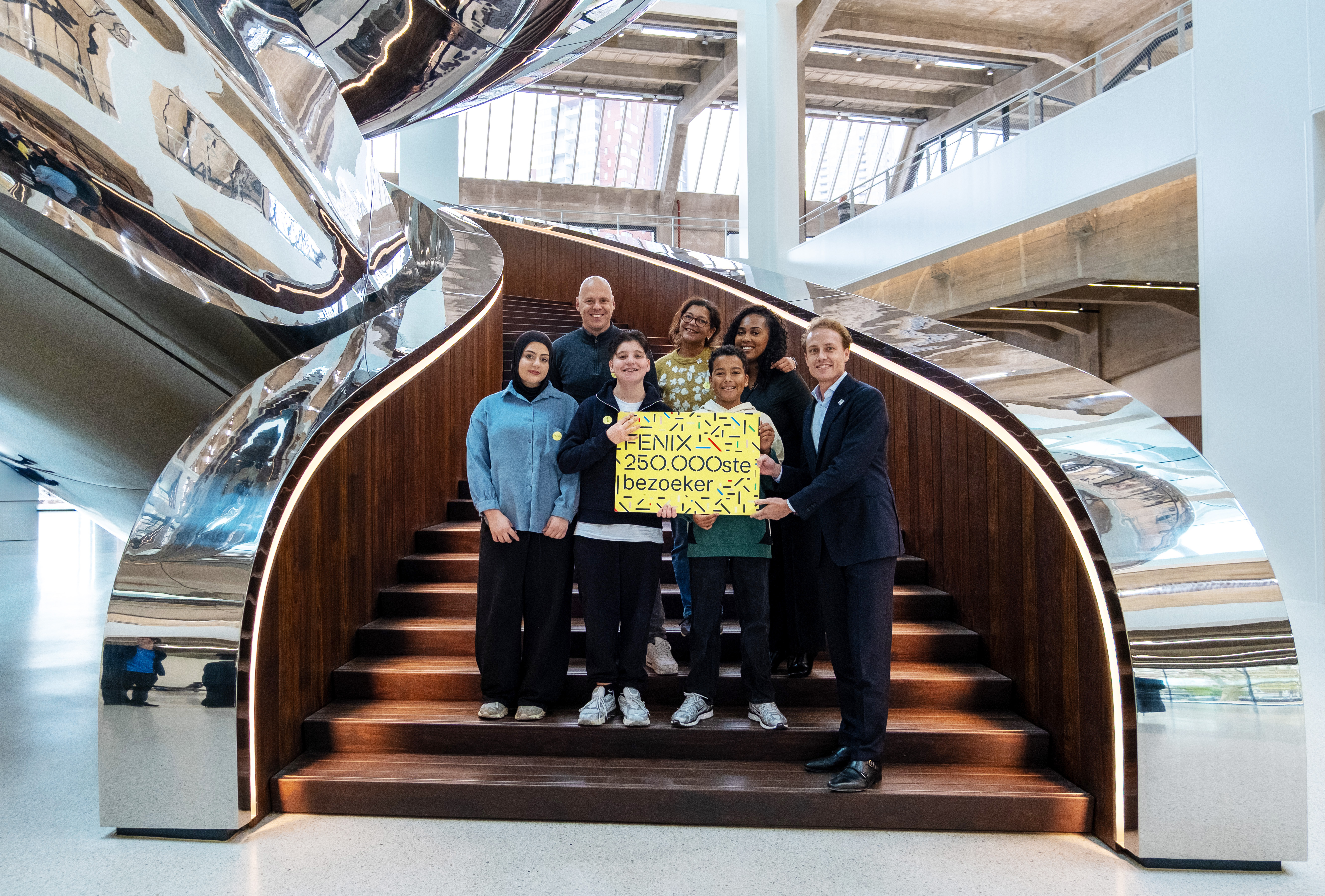De Kooning masterpiece installed for opening of Fenix in Rotterdam - the new art museum about migration
This week sees the final installation of the collection of Fenix, the new art museum about migration, opening in Rotterdam on Friday 16 May 2025.

Man in Wainscott (1969), by Willem de Kooning (1904–1997), has been installed this week in a daylight showcase specially designed for it at Fenix.
De Kooning painted the work in 1969 during one of his most productive periods, in his East Hampton studio at the far end of Long Island. The bright light of the Atlantic Ocean there often reminded him of the Netherlands.
A story of Migration
On the morning of July 18, 1926, 22-year-old Willem de Kooning hastily left Rotterdam for New York without saying goodbye. De Kooning was born on Zaagmolenstraat in Rotterdam and had long dreamed of the United States. His uncle, who worked for the Holland-America Line, told him stories and gave him an American football as a boy. Later, De Kooning discovered jazz and the Charleston in Rotterdam’s lively nightlife, and with friends he made plans to cross the ocean. “To get rich,” as he would later say in interviews.
Like millions of others, he departed from one of the Rotterdam docks where Fenix now stands, setting out to start a new life. His early years in America were difficult, but after World War II, as New York became the center of the art world, America was ready for a home-grown artist. Willem de Kooning was embraced as an American Master. Despite his international fame, De Kooning never disowned his Rotterdam roots. In a letter to his father he wrote: “And as I go to bed, I think of Zaagmolenstraat.”
Anne Kremers, Director of Fenix:
“De Kooning’s migration story is as colorful as his work. He began life in poverty in North Rotterdam, boarded a ship nearly a hundred years ago as a stowaway without a valid ticket, and ended up as a celebrated artist in New York. It’s almost symbolic that this painting from his golden years will now be permanently displayed in a former harbor warehouse in the city he once left behind.”
About Fenix
Fenix is the new art museum about migration. It is located in a restored historic warehouse from 1923, standing on the very docks in Rotterdam where millions of people began new lives—on their way to the United States or Canada, or arriving from China, Cape Verde, or Greece. At this site, Fenix presents works by over a hundred artists from every continent, showing that migration is both timeless and universal.
In addition to the international art collection, the museum will also feature the Suitcase Maze, an installation of 2,000 suitcases donated by individuals. On the ground floor is Plein: a 2,000-square-meter covered city square open to everyone’s ideas, where programs will be co-created with Fenix. Various kitchens in Fenix tell migration stories—through the museum café, the bakery, the ice cream parlor, and on Plein.
The museum’s largest artwork and centerpiece is the thirty-meter-high Tornado, with two intertwined staircases spiraling up through the atrium and piercing the glass roof to meet at the panoramic viewing deck. The Tornado is designed by Chinese firm MAD Architects. Fenix is the first museum building in Europe designed by a Chinese architectural firm.
Related news

De Kooning masterpiece installed for opening of Fenix in Rotterdam - the new art museum about migration
This week sees the final installation of the collection of Fenix, the new art museum about migration, opening in Rotterdam on Friday 16 May 2025.
Read more...
Newly Discovered Portrait of Erasmus Goes to Fenix Art Museum
Painting by Hans Holbein becomes one of the most important works at new migration-focused art museum
Read more...